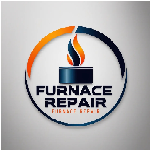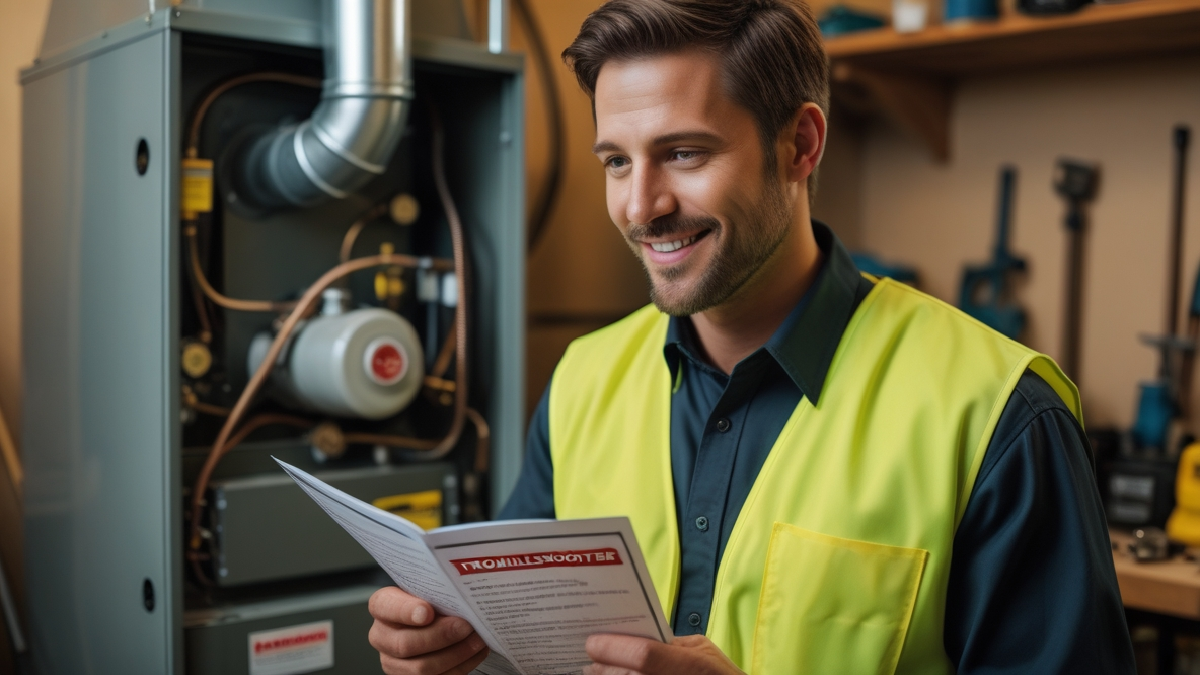Understanding the Basics of Gas Furnace Repair: What Every Homeowner Should Know
Embarking on the journey of gas furnace repair can initially seem daunting, especially for homeowners who lack technical expertise in heating systems. However, possessing a fundamental understanding of how a gas furnace operates, its key components, and the importance of routine maintenance can significantly demystify the process.

This knowledge not only empowers you to troubleshoot common issues confidently but also ensures safety remains a top priority. In this section, we will explore the core principles behind a gas furnace’s operation, detail the essential parts involved, and emphasize why regular maintenance is crucial for preventing major malfunctions. By grasping these basics, you can better identify early warning signs of trouble and make informed decisions about when to attempt repairs yourself or call in a professional, ultimately helping your furnace run efficiently and reliably through the cold seasons.
Recognizing Common Gas Furnace Problems and Symptoms
Before diving into troubleshooting steps, it’s vital to develop an eye for the typical signs indicating your gas furnace may be experiencing issues. Recognizing these symptoms early can save you time, money, and potential safety hazards. Gas Furnace Repair Common problems include the furnace failing to turn on at all, inadequate heating, strange noises such as banging or squealing, or frequent cycling where the system turns on and off repeatedly.
Each of these symptoms can point to specific underlying issues, such as a faulty pilot light, clogged filters, or malfunctioning thermocouples. For instance, if your furnace isn’t producing heat, it might be due to a pilot light that has gone out or an electronic ignition failure. Strange noises could suggest loose components or motor problems. Persistent cycling often indicates issues with the thermostat or airflow obstructions. By understanding these signs and their possible causes, you can prioritize repairs more effectively, prevent further damage, and ensure your home stays warm and safe during winter months.
Preparing for Gas Furnace Troubleshooting Safely and Effectively
Safety cannot be overstated when working with gas furnaces. Proper preparation is essential to avoid accidents and ensure the troubleshooting process is smooth. Begin by turning off the power supply to the furnace—either switch off the circuit breaker or remove the fuse—to eliminate electrical hazards. Next, ventilate the area well to prevent the buildup of any potentially dangerous gases.
Familiarize yourself with the location of critical safety features, such as the gas shutoff valve and emergency controls, so you can quickly respond if needed. Gather all necessary tools—multimeter, screwdrivers, flashlight, replacement filters—and review your furnace’s manual for model-specific instructions. Proper preparation not only minimizes risks but also streamlines the troubleshooting process, saving you time and frustration while maintaining safety at the forefront of every step.
Step-by-Step Troubleshooting Guide for Common Gas Furnace Issues
Checking the Thermostat Settings and Power Supply
The first step in diagnosing any furnace problem is verifying that the thermostat is correctly set and functioning properly. Ensure that the thermostat is powered on, set to ‘heat,’ and the temperature setting is higher than the current room temperature. Sometimes, the issue is as simple as a dead battery in the thermostat or incorrect settings.
Additionally, inspect the circuit breaker or fuse box to confirm that the furnace is receiving power. Reset any tripped breakers or replace blown fuses. If the thermostat is battery-powered, replace the batteries and test whether the system responds. Confirming these basic elements are in order can often resolve minor issues quickly, saving you from unnecessary repairs or professional calls.
Inspecting and Cleaning the Air Filter Gas Furnace Repair
A dirty or clogged air filter is a common culprit behind inefficient heating and system shutdowns. Locate the filter, usually situated near the return duct or blower compartment, and carefully remove it for inspection. If the filter appears dark, clogged with debris, or visibly dirty, it’s time for a replacement.
Installing a new filter of the correct size and type will restore proper airflow, improve system efficiency, and reduce strain on the furnace components. Regularly changing or cleaning the air filter—every one to three months depending on usage—can significantly extend the lifespan of your furnace and prevent issues related to poor airflow, such as overheating or cycling problems.
Examining the Pilot Light and Ignition System
For older gas furnaces equipped with a pilot light, a common problem is the pilot going out, which prevents the furnace from igniting gas and producing heat. Locate the pilot light assembly, and check if it’s lit. If it’s extinguished, follow the manufacturer’s instructions to relight it safely. For newer models with electronic ignition systems, ensure the igniter is functioning correctly.
A cracked or malfunctioning igniter will fail to produce the spark necessary to ignite the gas. If the igniter isn’t sparking or appears damaged, it may need replacement. Troubleshooting the pilot light or ignition system is crucial because if these components fail, the entire heating process halts, leaving your home cold and uncomfortable.
Assessing the Gas Supply and Ventilation Gas Furnace Repair
Gas supply issues are another common reason for furnace malfunction. Begin by checking that the gas valve is fully open and that there are no visible leaks or obstructions in the supply line. If you smell gas or suspect a leak, turn off the gas supply immediately and contact a professional technician.
Proper ventilation is equally important for safe operation; ensure that vents, flues, and exhaust pipes are clear of debris, snow, or other obstructions. Blocked vents can cause dangerous carbon monoxide buildup and prevent proper exhaust of combustion gases. Addressing gas supply and ventilation problems promptly not only restores your furnace’s functionality but also prevents potentially hazardous situations in your home.
Testing and Replacing Faulty Components Gas Furnace Repair
If the basic checks above do not resolve the issue, you may need to test individual components such as the limit switch, thermocouple, pressure switch, or control board. Use a multimeter to check for electrical continuity and proper voltage levels. Consult your furnace’s manual for specific testing procedures and safety precautions.
If a component is found to be defective or worn out, replacing it can often restore the system’s proper function without extensive repairs. Regularly inspecting and replacing worn parts ensures your furnace operates efficiently and reduces the risk of unexpected breakdowns during the coldest months.
When to Call a Professional for Gas Furnace Repair
While many troubleshooting steps are manageable for homeowners, certain issues demand professional expertise. If you encounter persistent gas leaks, electrical faults, or if you’re uncomfortable working with gas lines or electrical components, it’s safest to contact a licensed HVAC technician.
Additionally, if troubleshooting efforts do not resolve the problem or if your furnace continues to cycle on and off repeatedly, professional diagnosis and repair are essential for safety and long-term performance. Recognizing your limits and knowing when to seek expert help can prevent accidents, ensure proper repairs, and avoid costly damage or safety hazards in your home.
Preventative Maintenance Tips to Keep Your Gas Furnace Running Smoothly
Prevention is always better than cure. Regular maintenance is key to avoiding unexpected breakdowns and extending the lifespan of your gas furnace. Schedule annual inspections with a qualified technician who can check for wear and tear, clean critical components, and verify safety features are functioning correctly.
Gas Furnace Repair Change your air filters every one to three months, depending on usage, and keep vents and ductwork clean and unobstructed. Monitor your thermostat and system cycles regularly, and address minor issues promptly to prevent them from escalating. Additionally, keep an eye out for unusual noises or performance drops and schedule repairs as needed. Proper maintenance not only enhances efficiency but also provides peace of mind, ensuring your home stays warm and safe throughout winter.
Conclusion: Empowering Homeowners with Knowledge for Safe and Effective Gas Furnace Troubleshooting
Understanding the fundamentals of gas furnace repair and troubleshooting common issues empowers homeowners to take control of their heating systems. Gas Furnace Repair While many problems can be addressed with simple, step-by-step procedures, safety must always be your top priority. If at any point you feel unsure or encounter complex problems such as gas leaks or electrical faults, don’t hesitate to call a licensed professional.
By following this friendly and comprehensive guide, you can identify and resolve many common furnace issues, ensuring your home remains warm, safe, and comfortable during the cold months. Remember, regular maintenance and early troubleshooting are your best defenses against costly repairs and safety hazards, making your home a cozy retreat for you and your loved ones.


Leave a Reply to Rheem Furnace Repair 8 Proven Steps to Diagnose Heating Cancel reply